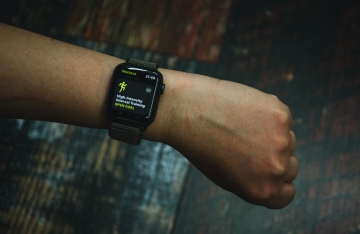Hyperpigmentation or dark spots are due to overproduced melanin in the skin by melanocytes. There are a lot of different factors that can cause extra melanin. Hormones — both estrogen and progesterone — can boost melanin levels. This is why pregnant women have dark spots that sometimes light up after birth; the sun can increase melanin levels — why we see more dark spots during the summer; and age can increase melanocyte sizes — why we see dark age spots in older patients.
Other causes, such as acne-related skin irritation, waxing and rough scrubs, may also cause dark spots. Knowing where dark spots come from now, keep reading and find out the six best treatments to get rid of dark spots according to dermatologists in Singapore.
-
Vitamin C
Vitamin C can be used as a natural antioxidant to help prevent free radicals from causing oxidative damage to the skin (which can, among other things, lead to wrinkles and a dull complexion). It also inhibits enzymatic processes that generate melanin in the skin, as this may help minimize skin’s dark color. Another benefit is that vitamin C lightens only targets troubled areas of pigmentation and not the rest of your skin.
-
Hydroquinone
Hydroquinone has been the gold standard for over 50 years when it comes to dark spot treatment. This ingredient can be used in quantities of 2 percent or less over the counter, while the prescription has 4 percent or more. Hydroquinone works on a biological level by inhibiting an enzyme called tyrosinase which helps in the production of melanin.
The effects of hydroquinone can be seen in as little as two weeks, in some cases. Most can, however, expect 8 to 12 weeks of use to see a noticeable difference depending on a few factors (such as the degree of hyperpigmentation, how strongly it penetrates, how long it has been there etc.).
-
Kojic acid
Kojic acid (derived from mushrooms or fermented rice) is widely used in skin lighteners, and is best used for optimum results in combination with hydroquinone. It functions by blocking a critical factor in the pigment cell development. The risk generally associated with topical kojic acid is allergic dermatitis, which is why it is used mainly in relatively low concentrations. During the night, those with sensitive skin should only opt for small doses, because inflammation and discomfort can be side effects.
-
Soy Extract
It has been shown that soy extract, which is extracted from soybean plants, helps brighten skin. This is why you can find it in lots of skin-illuminating items. Soy serves as a cure for dark spots by preventing melanin from entering the top layer of skin.
-
Azelaic acid
This lesser known ingredient is a treatment recommended by dermatologists for dark spots on the face. What exactly is it, then? Azelaic acid is a natural extract from oat, wheat, or rye which interferes with abnormal pigmentation development. It also has antibacterial properties which can help banish acne and leave behind the scars pimples.
-
Lasers
Lasers are the most costly treatment to reduce the dark spots, and most effective. They use a focussed light beam with a particular target or chromophore to break up and remove the skin’s pigment particles. IPL or intense pulsed light can heal unhealthy pigmentation.
The ideal hyperpigmentation laser treatment will provide a cooling blast (or at least, limit the amount of heat generated). Ask your dermatologist or laser technician if the laser they use treats with a concentrated beam at a rapid rate. This laser form can help prevent inflammatory reaction, burns or collateral damage.




